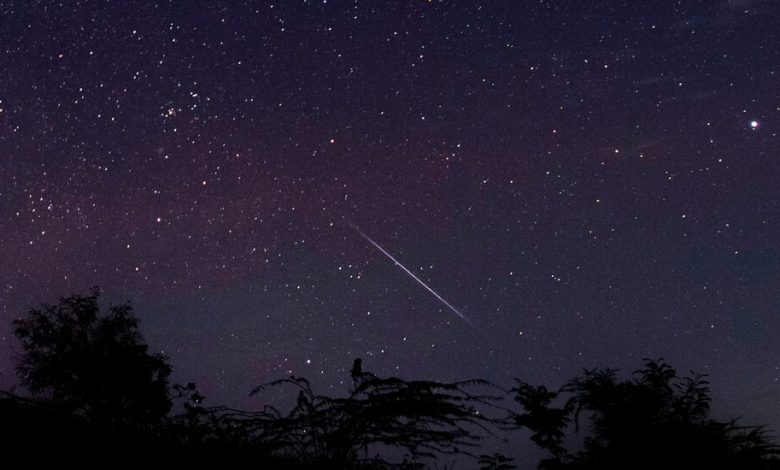Geminid Meteor Shower: How and When to Watch It Peak

Tuesday night into Wednesday morning will be one of the special dates scattered throughout each year when skywatchers can catch a meteor shower as a multitude of flares potentially burst in the darkness.
Meteor showers occur when our planet runs into the debris field left behind by icy comets or rocky asteroids going around the sun. These small particles burn up in the atmosphere, leading to blazing trails of light. The regularity of orbital mechanics means that any given meteor shower happens at roughly the same time each year.
The latest shower is the Geminids. They have been active from Nov. 19 to Dec. 24 and their peak night is Dec. 13 to the morning of Dec. 14.
Often one of the best and most reliable showers of the year, the Geminids will occur six days after the moon is full in 2022, greatly interfering with their light.
Viewers in northern latitudes should have about three hours to see them after the sun sets but before the moon rises, when they can expect perhaps five to 10 meteors per hour.
Even when the moon is up, its place in the sky will not be close to the constellation where this shower radiates from, Gemini, so observers can try to get the moon behind a wall or other obstruction for increased visibility.
And there are more meteor showers to come. Visit The Times’s list of major showers expected in 2022, or sync our curated collection of major space and astronomy events with your personal digital calendar.
How to see a shower
The best practice is to head out to the countryside and get as far away from artificial light sources as possible. People in rural areas may have the luxury of just stepping outside. But city-dwellers have options, too.
Many cities have an astronomical society that maintains a dedicated dark sky area. “I would suggest contacting them and finding out where they have their location,” said Robert Lunsford, the secretary-general of the International Meteor Organization.
Meteor showers are usually best viewed when the sky is darkest, after midnight but before sunrise. In order to see as many meteors as possible, wait 30 to 45 minutes after you get to your viewing location. That will allow your eyes to adjust to the dark. Then lie back and take in a large swath of the night sky. Clear nights, higher altitudes and times when the moon is slim or absent are best. Mr. Lunsford suggested a good rule of thumb: “The more stars you can see, the more meteors you can see.”
Binoculars or telescopes aren’t necessary for meteor showers, and in fact will limit your view.
